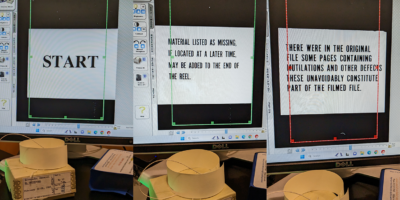By Louis Olander
Many instructors think of good writing pedagogy and accessible pedagogy as two separate things, but much of what makes Writing Across the Curriculum (WAC) important for developing student skills in critical thinking and clarity of expression aligns directly with the principles of accessible pedagogy, specifically Universal Design for Learning (UDL).
UDL is a framework for accessible pedagogy that recognizes that students who are considered to have disabilities are, in fact, students who are disabled by curricula that is not designed for their learning. As such, UDL posits that “normal” or “average” learners are an illusion, and that teaching that targets such students is misguided. Instead, UDL advocates for teaching to the margins—students who are often excluded from learning opportunities—under the premise that the pedagogical changes designed to support the needs of the most marginalized students will benefit many others, including those with undocumented needs, or in other words just about everybody. By way of a concrete example, in order to address the learning needs of a student with diagnosed dysgraphia, a professor might provide students with the option of completing written tasks (especially timed, in-class exams) at home with an expanded (but still finite) timeframe. This would not only provide support for the documented needs of that student, but also likely improve the quality of everybody’s writing.
UDL is a way of disrupting dynamics of disablement in higher education, particularly at CUNY as an urban university, where disability is almost never working alone. Because the functions of elementary and secondary special education are so often in cahoots with the functions of institutional racism, students often enter CUNY with misdiagnoses and misclassifications, unidentified learning needs, and perhaps most commonly, unnecessary stigmatizing disability labels which they are eager to shed. CUNY students are more likely than the students of most universities to be undocumented, racially and linguistically minoritized, and/or to have grown up in urban poverty. As such, accessible pedagogy is a political project—a way of rejecting the normative frame that ignores so much of what our students at CUNY bring with them.
Like UDL, WAC has its roots in the political project of expanding access to learners who have been undervalued. Because historically colleges and universities have assumed a level of mastery of writing at the college level upon admission (i.e. at least the five-paragraph essay), they have often ignored writing instruction and further privileged those who enter college from “good” schools. But since CUNY opened its doors to all students in 1969, our colleges have been tasked with balancing access and academic excellence, and while the two are not at odds with each other, many have thought them to be. Some of the most iconic figures in CUNY history—Adrienne Rich, Audre Lorde, and Toni Cade Bambara (among many others)—were also central figures in developing basic writing instruction at CUNY that pursued writing excellence for students whose primary and secondary education experiences had not adequately prepared them for academic writing.
Since 1999, WAC has tried to carry on this legacy at CUNY in promoting critical thinking and clear expression of thought through writing in classes in all departments, not just English programs. WAC has invited pedagogues to rethink the value and emphasis on privileged modes of expression, such as high stakes term papers and in-class blue book tests. Scholars of WAC, such as John Bean and Peter Elbow, have developed pedagogical methods that promote writing as a communal, feedback-driven process wherein writing is a careful articulation of critical thinking. In line with UDL, these techniques also benefit a wide range of students marginalized by traditional curricula.
Critically, neither UDL nor WAC should be seen as an additional burdensome task in our pedagogy—rather, they allow us to design for access and welcome students’ talents and skills that fall outside of what is usually recognized. I have argued that UDL is best used as an appreciative taxonomy, that is, a way of understanding and categorizing student and teacher assets as a way of further building upon them. Given the specific overlap between UDL and WAC, which I will address in subsequent posts, I believe that at CUNY there is an opportunity to be explicit in how we join the two together to find new ways of teaching and learning that balance access and excellence.









Leave a Reply